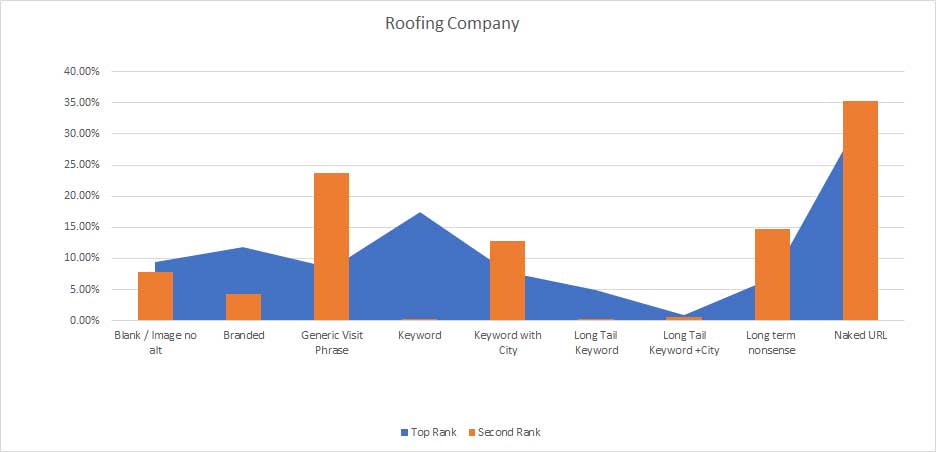What’s The Perfect Anchor Text for Your SEO Campaign?
How research can help you avoid mistakes rookie SEO marketers make and how brands are still manipulating the search results with spam anchor text
If you have been doing SEO for as long as we have, you have seen some major changes to the way Google indexes, ranks, and chooses not to rank websites for certain keywords.
In the early 2000s, you could rank a website in a very competitive niche for very tough keywords with a simple strategy that almost never failed. Before we get started, let’s set the table with common terminology so that we are all on the same page. If you are not an SEO guru, this will allow you to better understand what we are discussing.
Common Search Engine Optimization Terms
Backlink(s): a backlink is a link from a website to the target website. Example: this is a backlink to Review Fire. If you click the link, it will go to our SaaS website for getting honest customer feedback & reviews.
Keyword: the search word or phrase we want to draw traffic from. For instance: “Silver Jewelry”.
Anchor Text: Anchor text is the words or phrases that are linked in the backlink. In the example above, Review Fire is the anchor for the backlink. As a rule, the anchor text normally has its own style that differentiates it from the text around it (blue font and underlined in this example).
Link Profile: refers to the mix of anchor text as a percentage of overall links. All things being equal, a diverse, natural link profile is better than one that appears to be manipulated and keyword stuffed. By diverse, I mean that the different anchor text linking to your website has a mix of the 8 different types of keywords listed below. Using an anchor text tool like Linkio will drastically help you with the right percentage of used anchors and therefore raise your rankings and visibility on the SERPs.
For the types of backlink anchor text, we will discuss in this blog, I will use roofing-related backlink anchor text in all the examples below.
- Keyword Anchor Text: the backlink uses a short keyword phrase like Roof Repair.
- Keyword + City: Roof Repair in Dallas
- Long Tail Keyword Anchor: What to do if you have a leaky roof
- Long Tail Keyword + City: What to do if you have a leaky roof in Dallas
- Branded Anchor Text: Lowry Roofing
- Naked URL: lowryroofco.com
- Nonsense long tail: This unrelated sentence links to a website
- Generic Visit Website Anchor: Click Here
Referring Domain – in the example above Seota.com is the referring domain. Often abbreviated to RD, the referring domain is the website that is doing the outbound linking.(Outbound links = OBL)
SERPS – Search Engine Result Pages (SERP) are the results you see on Google or Bing after you search.
The Good Ol’ Days of Making Money Online
Now, back in the good old days before Google got super serious about thwarting SEO marketers from manipulating the SERPS, we could move your website into the top 3 before the ink dried on your subscription check. We manipulated Google by using keyword-rich anchor text in backlinks. For instance, we owned a silver jewelry website that was #1 on Google for “silver jewelry” for six years. We had hundreds of backlinks to our website with the anchor text silver jewelry. (We dominated hundreds of search phrases for jewelry with this exact strategy.)
To dominate the SERPs, we did the on-page optimization and threw a bunch of keyword-rich backlinks at it. That was the entire strategy. (we could also buy links on Forbes, local TV station sites, and various other authority websites – all with keyword anchors.)
This strategy worked well from 1999 – 2012ish. There have been multiple algorithm changes since aimed at correcting this ability to influence ranking results. First, Google focused on the people selling links (with lots of anchor-rich text), then they went after the anchors themselves. We sold our silver jewelry store in 2009. Before we sold the business, we were in the process of diversifying our anchor text.
The anchor text stuffing technique allowed small businesses to compete with large brands for competitive keywords (if they hired an SEO specialist who knew what they were doing).
The crazy thing we discovered when researching this article is that the phrase silver jewelry is still being manipulated by big brands, but small businesses using the same strategy are nowhere to be found in the SERPS. Brighton is #1 for silver jewelry and they have 69,710 links with the anchor text silver jewelry – all coming from the same domain: a domain that they own. A small business that only sells silver jewelry and has 186 different domains linking to it on a variety of keywords? They don’t even rank in the top 30. (update on Brighton – slipped to #4 with their spam link approach – but still getting a lot of traffic for G)
So, if you are doing SEO for a big brand, you can get away with keyword stuffing your anchor text. If that is you, you can stop reading right now. For the rest of you trying to fight for search engine real estate, keep reading.
How should your anchor text look?
Natural Keyword Anchor Text:
In a perfect world, you would have the best content on the internet about your niche. As a result, you would garner thousands of natural links. Since this may not the case, you might need to manufacture backlinks while you work on your improving your content.
How we do it:
We like to build links by creating content, promoting it, and if we must – we beg people to link to it. When we follow the content-driven process described above, we get links with anchor text we never would have guessed: nonsense long tail and a dozen versions of “Click Here To Read More About X.” Natural backlinks are not always on-point for the content.
Here is a list of anchor text linking to the Seota Digital Marketing home page, as an example:
(See real-life research with a graph near the bottom of the article)
Branded Keywords: 28%
- Seota Digital Marketing
- Seota
- Seota.com
Naked URL (anchor is the website address) 17%
- https://seota.com
- https://seota.com
- https://seota.com
Generic Visit Website Anchors: 18%
- Website
- Visit site
- Click here
- Click to visit website
- here
Keyword Rich Anchor Text 7% (combined keyword and KW+city)
- Best website design
- Custom WordPress theme
- Digital marketing
- Auto Repair Website Design
- eCommerce design
Long Tail Keyword Anchors 24% (combined with LT + City)
- digital marketing, seo, web design & development
- Small business marketing Frisco TX
- Seo agency and web design & development Seota Digital
- web design, seo and digital marketing with impact
- a case study in controversial content
- responsive design employs an ongoing detection of the screen dimensions and organizes the page’s content accordingly
6% of our links were from images.
As you can see, a natural link profile has a lot of variations in anchor text and the most common are not typically keyword specific. Seota targets customers looking for digital marketing, so we have a slight advantage because our business name is also a keyword phrase for which we want traffic.
Building Your Anchor Text to Look Natural
The Take-Away for You:
If you are getting links through guest blogging, or Google forbid – buying links – you should be careful to keep your anchor text diverse. Some of our SEO friends recommend specific formulas for anchor text ratios. We don’t, but we do recommend at least 20% branded anchor text and another 20%+ be a version of your URL. After that, you can have fun with exact-match keywords and partial-match keywords. Don’t forget to use generic visit website links.
Go Natural with Content Marketing
A better strategy is to build great content and promote that content to people who care about it. As a result, you can watch the links come in naturally. This strategy is time-intensive and only works for clients who are good writers themselves or have the budget to create long content. This can involve a lot of work paraphrasing and summarizing other work as well as adding a unique twist or angle to your content. We rarely have the opportunity to do long-form content for ourselves. (seriously — this is the takeaway from this whole blog. Build great content)
Since we used roofing in our examples, I will share some real-life data from keyword research for one of our local roofing clients.
The graph below shows two different keyword strategies for 1st and 2nd SERP listing for Roof Repair City (where the city is the city we searched in).

As you can see, both websites have a high percentage of naked URL anchor text. Neither have a lot of long-tail keyword anchors that mention the city.
Content on both websites is good to good+.
The #2 ranked site has 160+ more domains linking to it.
The quality of backlinks for both websites is similar.
- #2 site has more generic links.
- #1 site has more keyword links.
- #2 site mentions city more often (13% vs 8%)
The #1 site has a more diverse link profile with anchor text more evenly spread across categories.
The data above, by itself, does not tell the whole story – we have not done a detailed on-page analysis for either site to determine if there is a reason when combined with the data above, that makes the difference between #1 and #2.
Diversify your backlinks and maybe you can be worried about how to move from #2 to #1 in a very competitive niche.





